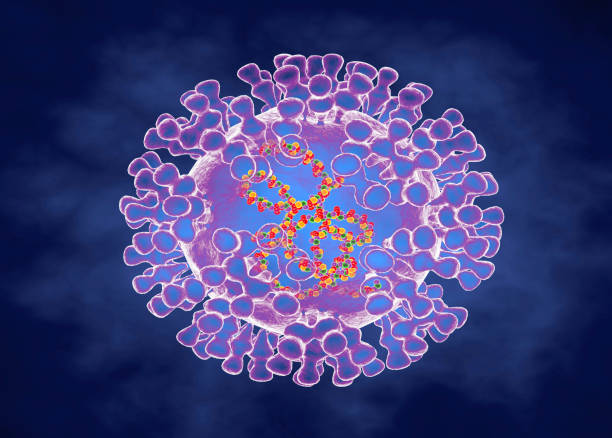Monkeypox.
PKGhatak, MD
Monkeypox virus belongs to an enveloped double stranded DNA virus of the genus Orthopoxvirus in the family Poxviridae and belongs to a subfamily of Chordopoxvirinae. In the central and west African jungle, the monkeys are the natural host and this was also documented in squirrels, prairie dogs, rats, dormouse and primates.
Artist's version of a monkeypox virus.
The first human illness was recorded in the Democratic Republic of Congo in 1970, just two years after Smallpox was eliminated there. From time to time local outbreaks were reported by the WHO. Cases were seen in central and west African countries when children were bitten by monkeys.
There are two subclasses of this virus – one in the Congo Basin virus which is more virulent and has a higher rate of transmission, and the other is in West African. At present both varieties are infecting the people of Cameroon.
The first reported case in the USA was in 1980. In 2022, the USA declared monkeypox a public health emergency. Human to human transmission was seen in NYC in the homosexual community. Infection of humans takes place through the exchange of body fluids, respiratory droplets, prolonged close contact, and occasionally by the use of contaminated towels and bed sheets.
The incubation period is 5 to 21 days. The initial symptoms of malaise, body aches, fever and lymphadenopathy for 4 -5 days, then the rashes appear on the face and extremities, including on the palms and soles. In homosexual individuals, rashes are also present in the genital and anal areas. In contrast to other varieties of pox, monkeypox patients show striking lymphadenopathy.
Pox is known to appear on the lips and mouth, the conjunctiva of the eyes. The rashes go through the stages of macules, papules, vesicles and pustules. In three weeks, the scabs of pustules dry out and then drop off. Until all scabs fall, the patient remains a source of infection. The monkeypox illness is a mild disease but in immune deficient people, it can produce severe illness. In African countries as high as 10 % of the population is infected, and the fatality is generally below 3 %, and in children, the mortality has gone up to 6 %.
Diagnosis of monkeypox is done on samples obtained from the skin of the lesions or the fluid of vesicle/pustule by PCR test to confirm the monkeypox virus. Blood tests are not reliable and other varieties of pox produce the same serology test results.
Monkeypox vaccines.
Two vaccines are available in the US. In post exposure two doses of the Jynneos vaccine are given. Another vaccine ACAM2000 is less commonly given but available on a limited scale. In very high risk groups prior exposure vaccination is approved.
People vaccinated for smallpox have limited protection in high risk groups, for the general public provides 85 % protection against monkeypox.
Antiviral drugs.
In Europe, an antiviral drug, Tecovirimat, originally developed for the treatment of smallpox, is approved for monkeypox. In the USA, Tecovirimat is approved temporarily on an emergency basis and availability is limited.
*************************************


No comments:
Post a Comment